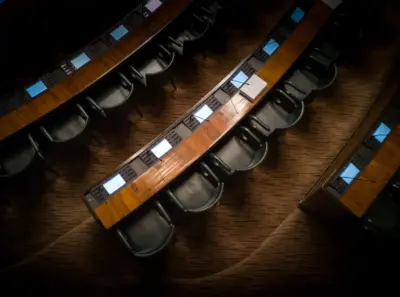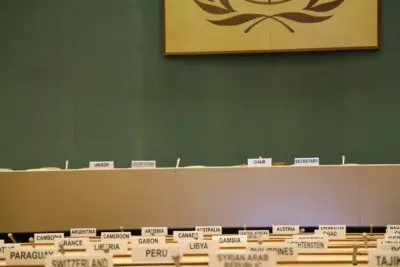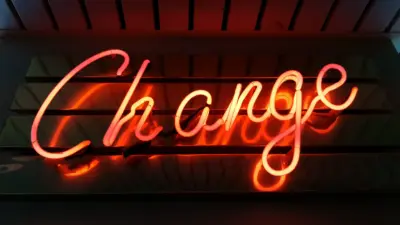
Why a Report Card? CEDAW as a Tool for Accountability
Tomorrow we release our 10th annual CEDAW Report Card.
A lot has changed in BC since our last election in April 2017. A lot of promises have been made, and a lot of words spoken. This year, we are measuring whether all this talk has trickled down to make a real impact in the lives of women.
The Report Card is one of many ways we work to hold the BC government accountable to its international obligations and commitments, particularly those that arise under the Convention on the Elimination of Discrimination Against Women (CEDAW). CEDAW recognizes that states have an obligation to take appropriate action to eliminate discrimination against women and support substantive equality. Canada ratified the CEDAW in 1981.
Under the CEDAW system, governments and civil society are required to report to the CEDAW Committee every four years on the progress that has been made in advancing gender equality. The CEDAW Committee then makes recommendations and findings.

While many people in Canada and abroad assume that Canada is fulfilling its international human rights obligations, the reality is that Canada has, time and again, been called out by the UN for serious human rights violations. In fact, in 2016, the CEDAW Committee, raised significant concerns about both the Federal and BC governments’ commitment to women’s equality rights and adherence to the protections enshrined in the CEDAW.
For years, the CEDAW Report Card has been highlighting the lack of government attention in addressing the crisis in access to justice in BC.
West Coast LEAF developed the CEDAW Report Card back in 2009, and this is our 10th year of applying this tool. West Coast LEAF uses the Report Card as an annual assessment of how the BC government has been doing on advancing gender equality. This year’s Report Card addresses the following nine key areas: access to justice, child care, child protection, employment, health, housing, poverty, women in prison, and violence including Missing and Murdered Indigenous Women and Girls.
We have focused on these areas because, in addition to them being within our mandate, they reflect the CEDAW Committee’s 2016 Concluding Observations on Canada. Within these key areas, the Report Card focuses only on issues that fall either partially or completely within the jurisdiction of the BC government.
In drafting our CEDAW Report Card, we aim to centre the experiences of the most marginalized communities. This intersectional approach recognizes that interlocking identities such as Indigeneity, race, disability, sexual orientation, gender identity, and recent immigration to Canada influence who can benefit from government action and who is left most vulnerable from government inaction.

The Report Card is produced through a collaborative process that brings together individuals working on gender equality across the province and beyond to support the research, drafting, and grading of the Report Card. Prior to publication, we also seek feedback and input from community members and organizations with expertise in each of the nine areas.
We are immensely grateful to all the volunteer researchers, editors, and reviewers that supported the drafting of this year’s report card!

We use the CEDAW Report Card in the following three ways:
1. To keep the pressure on the government in non-reporting years to push forward the Committee’s recommendations.
For example, in our 2017 Report Card, we commented on the government’s inaction in addressing the Committee’s concerns about disparities in health care, particularly access to “culturally appropriate harm reduction services” for drug users. We also called on the BC government to create a plan for implementing the CEDAW Committee’s 2015 recommendations on addressing violence against Indigenous women and girls.
2. As a reflection of how the government did this past year on advancing gender equality. By identifying areas where significant work has been done and areas where work remains to be done, the CEDAW Report Card shows where the government’s focus has been and what areas need greater attention.
CEDAW recognizes that states have an obligation to take appropriate action to eliminate discrimination against women and support substantive equality.
For example, for years, the CEDAW Report Card has been highlighting the lack of government attention in addressing the crisis in access to justice in BC and its disproportionate and severe impact on women, particularly marginalized women.
3. As a tool for engaging with government on how we get to where we want to go. This is where the grades come in, as difficult as it is to assign letter grades to these complex issues. As in most Report Cards, the grades in the CEDAW Report Card flag what we need to work on, where improvements are most urgently needed, and how we can progress towards our shared goal of a just and equal world. Using letter grades to sum up BC’s record on women’s human rights helps us attract media attention, spark public conversation, and build momentum for change.
No one, especially the government, should be happy with low letter grades in these vital areas impacting women’s ability to survive and thrive.
Tune in tomorrow when we launch the Report Card to see where BC stands in advancing gender equality, and follow us as we engage government on what needs to get done.

Elba Bendo is the Director of Law Reform with West Coast LEAF.
Questions? Feedback? Email us at blog@westcoastleaf.org